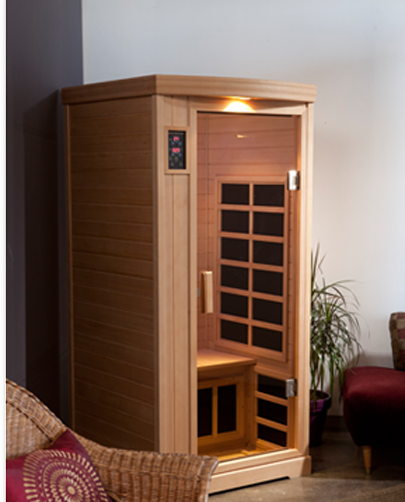

The use of private saunas, especially involving infrared saunas, is also increasing and saunas are used for physical therapy in massage clinics, health spas, beauty salons, and domestic homes. Public sauna facilities can be located within exercise facilities and the relationship between saunas and exercise, which may include synergistic hormetic responses, is an area of active research. Sauna bathing is inexpensive and widely accessible with Finnish-style saunas more often used in family, group, and public settings and infrared saunas more commonly built and marketed for individual use. Both traditional Finnish and infrared sauna bathing can involve rituals of cooling-off periods and rehydration with oral fluids before, during, and/or after sauna bathing. These saunas use infrared emitters at different wavelengths without water or additional humidity and generally run at lower temperatures (45–60☌) than Finnish saunas with similar exposure times. In the past decade, infrared sauna cabins have become increasingly popular. Traditional Finnish saunas are the most studied to date and generally involve short exposures (5−20 minutes) at temperatures of 80☌–100☌ with dry air (relative humidity of 10% to 20%) interspersed with periods of increased humidity created by the throwing of water over heated rocks. Modern day sauna use includes traditional Finnish-style sauna, along with Turkish-style Hammam, Russian Banya, and other cultural variations, which can be distinguished by the style of construction, source of heating, and level of humidity.

Sauna bathing is a form of whole-body thermotherapy that has been used in various forms (radiant heat, sweat lodges, etc.) for thousands of years in many parts of the world for hygiene, health, social, and spiritual purposes.


 0 kommentar(er)
0 kommentar(er)
